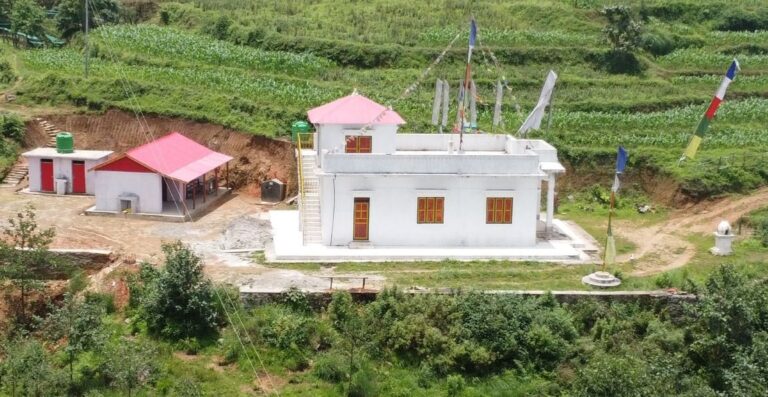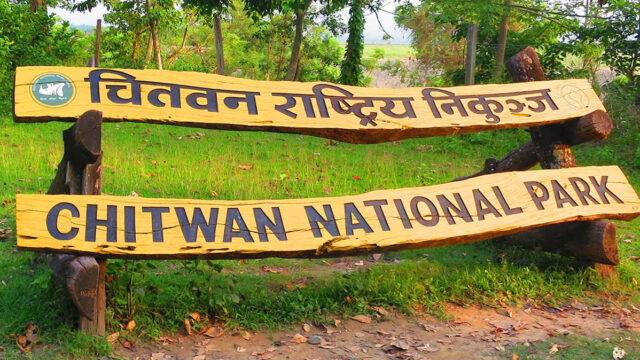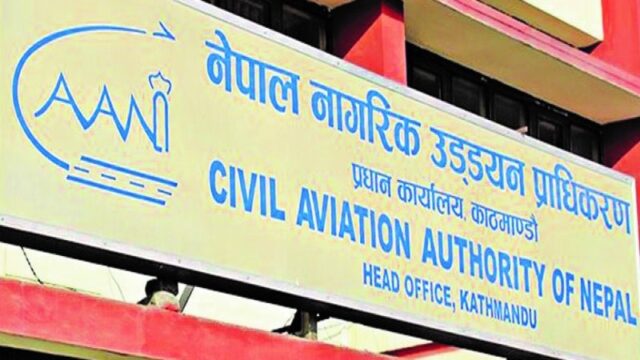A significant initiative to preserve Buddhist culture and promote religious tourism has taken shape in Shadananda Municipality–10, Tintale. A new Buddhist monastery, named ‘Samtoling Gumba’, has been constructed in this hilly region with the aim of nurturing spiritual practices and supporting the growing potential of religious tourism in eastern Nepal.
Monument to Culture and Faith
According to Pemdorchi Sherpa, the ward chairman of Sampang, the monastery was built with a total investment of approximately NPR 12 million. The funding was sourced through the collaborative efforts of the federal government, provincial authorities, the local government, and the voluntary labor (janashramdan) of local residents.
Built on around two ropanis of land, the monastery features a prayer hall, a kitchen, toilets, and a drinking water facility. The ward office also allocated a separate budget of NPR 500,000 for the artistic decoration of the monastery. This includes various paintings and figures that reflect the philosophy and teachings of Buddhism. Chairman Sherpa stated that these efforts were made not only for aesthetic appeal but to connect the spiritual atmosphere of the monastery with traditional Buddhist values.
From Earthquake Ruins to Spiritual Revival
The newly constructed monastery replaces an older one that was severely damaged during the devastating earthquake of 2015 (2072 BS). Since then, the Buddhist community in Tintale had been facing difficulties in conducting religious practices due to the unsafe condition of the old structure. Recognizing the need to restore the spiritual and cultural hub, the ward took the lead in building a new, resilient monastery.
“We undertook the construction of this monastery to protect Buddhist religion and culture, while also envisioning the promotion of religious tourism in our area,” said Chairman Sherpa. “A large number of Buddhist devotees reside in this region, and the dilapidated condition of the previous monastery had created many challenges. After tireless efforts from the ward, we have finally succeeded in building a safe and serene place for worship.”
Sherpa also shared that he personally donated two ropanis of land for the monastery’s construction, while a local resident, Nimchhiri Sherpa, contributed an additional eight ropanis without charge. This generous contribution highlights the deep commitment of the community toward religious and cultural preservation.
A Source of Inspiration and Community Unity
Local resident Phurlakpa Sherpa expressed his happiness at the construction of the new monastery, stating that the enthusiasm among the community has increased significantly. “More than 120 people in this area follow Buddhism, and this monastery has provided them with a safe and dignified place to worship,” he said.
He also pointed out that prior to the new construction, worshippers had to use the old, partially collapsed structure, which posed serious risks. “Now, with a fully equipped and safe monastery, it is much easier for all of us to gather and perform rituals together,” he noted. Monthly gatherings for group worship have resumed, reviving a long-standing tradition that had been disrupted for years.
Boost to Local Religious Tourism
The construction of the Samtoling Monastery has also started to show positive signs in terms of tourism. People from nearby villages and districts have begun to visit the site to offer prayers and admire the serene architecture and spiritual ambiance. As the monastery is situated near the expanded ‘Mundum Trail’, a culturally significant trekking route, it is expected to draw more domestic and international tourists.
Ward chairman Sherpa believes the monastery will serve as a key point of attraction on the Mundum Trail. “This place now offers visitors an opportunity not only to witness the natural beauty and lifestyle of the Kirati and Buddhist communities but also to take part in cultural exchanges,” he said.
Path Ahead: Linking Spirituality and Development
The development of the Samtoling Gumba is an example of how infrastructure, cultural heritage, and tourism can align to promote local prosperity. The project has not only addressed the religious needs of the local population but has also become a symbol of unity, resilience, and shared cultural identity.
As visitors continue to arrive and interest in Buddhist heritage grows, the monastery is set to become both a spiritual center and a tourist destination. With continued support and promotion, the Samtoling Gumba could become a key landmark in Bhojpur’s religious and cultural tourism landscape.
In an age where cultural roots and traditions often face neglect, the initiative in Shadananda–10 offers a hopeful reminder of what communities can achieve when they come together for a shared purpose, preserving faith, empowering identity, and opening the doors to new opportunities through tourism.






